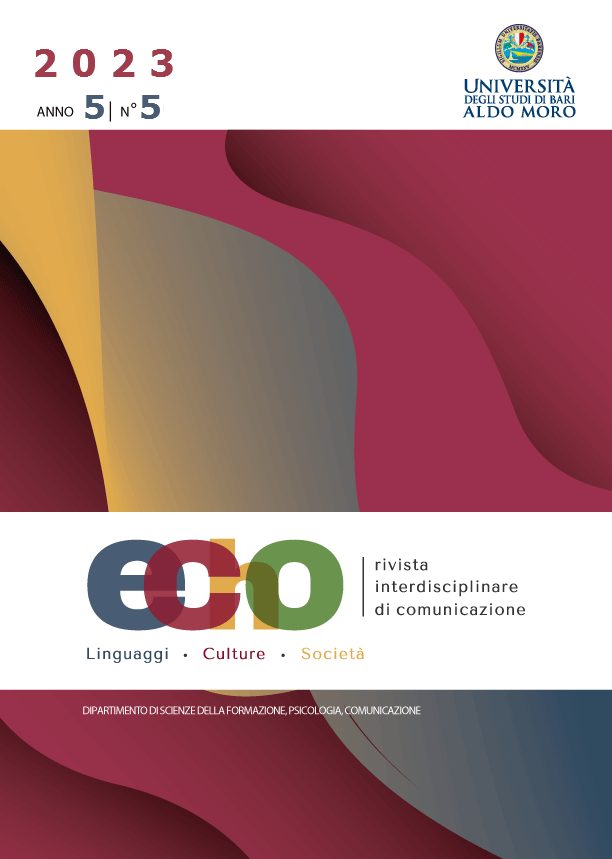The Spaces of the Desert in Nadine Gordimer’s The Pickup
DOI:
https://doi.org/10.15162/2704-8659/1878Parole chiave:
Apartheid, Desert, Gilles Deleuze and Félix Guattari, Nadine Gordimer, The PickupAbstract
As Nadine Gordimer’s readers and critics know well, her entire writing, both during apartheid and in its aftermath, is crossed throughout by the theme of place/s and by the conflation of place and being. With The Pickup (2001), her novel “on exile and displacement”, in her own words, she fully enters a transnational ground in which most effectively places are dialectically connected with spaces, with the desert space being given a crucial role in the ‘geo-semantics’ of the novel. Actually, it figures as a third main character besides the two protagonists Julie Summers – the white, young South African daughter of a well-off family of European descent – and Ibrahim ibn Musa, the Arab illegal migrant living in hiding in post-apartheid underground Johannesburg. One may say that Julie and Ibrahim’s different ways to relate to the desert will qualify their diverging destinies. Not only is the desert given as a living, material, and anthropic/cultural reality but it discursively surfaces at various points of the novel. In particular it is invoked by Ibrahim through the names of ‘his’ pre-Islamic poets of the desert Imru’ al-Qays and ‘Antara ibn Shaddad; then, through the “Chapter of Mary” in the Koranic XIX Sura Julie feels particularly attracted to, in which pregnant Mary is said to reach, alone, the desert to find a shelter where to conceive. It is also invoked in Julie’s giggling dismissal of interest in the “charades in the desert” – “imperialism in fancy dress”– of adventurous Hester Stanhope and T. E. Lawrence. So, the textual ‘spaces’ of the desert in The Pickup are various and they significantly add to the semantic and symbolic density of the novel. Necessarily, the desert space in The Pickup cannot be approached if not contrastively, as, in Deleuze and Guattari’s terminology, the par-excellence “smooth” space opposed to the newly “striated “space of post-apartheid Johannesburg with its legacy of racialized and criminalizing policy of space. Their geo-philosophical spatial grammar turns out to be fruitful also when its qualifying distinction between “migrant” and “nomad” is applied, respectively, to Ibrahim and Julie, once the couple is in the first’s postcolonial Islamic home-village, in an unnamed Saudi Arabian region. Here, Julie’s encounter with the desert, as well as with Ibrahim’s family and community at that, is given as non-exotic and non-orientalist. The present essay, in fact, rejects the frequent quasi-orientalist critical reading of the desert as an instrumental stage for Julie’s self-refashioning. Rather, it approaches it as the unboundable, unmappable, and “deterritorialized” palimpsest of ever-reforming traces – the opposite of the violently hyper-territorialized space of the apartheid regime, as well as of the new politics of closure and separateness of post-apartheid Johannesburg. Julie never exoticizes her relationship with the otherness of the desert, which, above all, invites an anti-hypostatic concept of place and belonging. At the root of her nomadic desire is no mystique of the desert, but the tragic history of her native countryDownloads
Pubblicato
2023-12-22
Fascicolo
Sezione
Saggi








